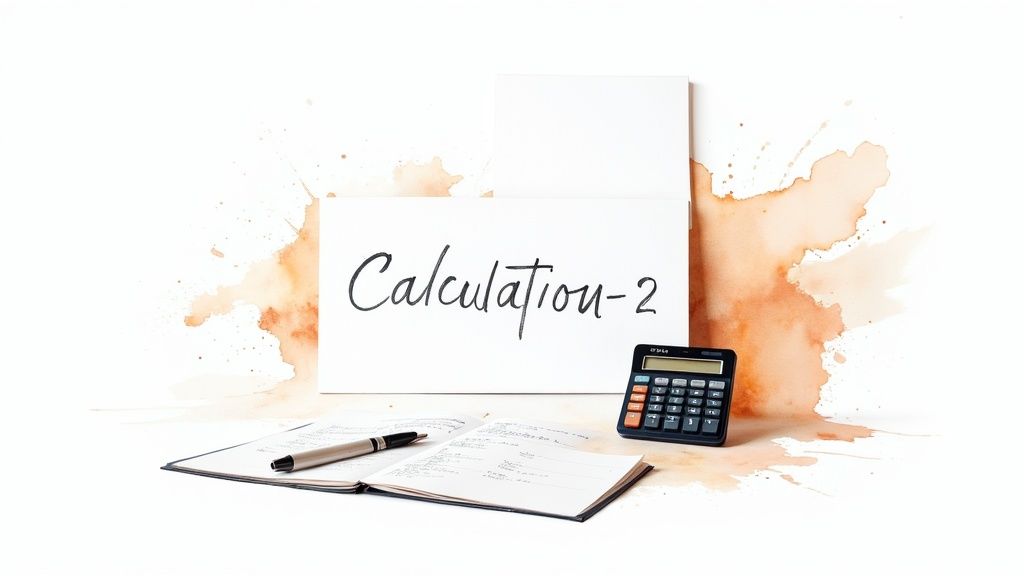




Realized price is a critical concept for investors, particularly in the volatile cryptocurrency market. It represents the actual funds received after selling an asset, accounting for all costs. This differs from the market price, which simply reflects the current quoted price. Understanding this difference is crucial for accurate investment return assessment.
For example, if you sell Bitcoin at a $30,000 market price, after deducting transaction fees, network fees, and taxes, your realized price might be closer to $29,800. This seemingly small difference can significantly compound and impact long-term profitability.
Many investors fixate solely on market price, leading to skewed portfolio performance assessments. Market price is a theoretical value driven by current supply and demand. It overlooks the practical costs of executing trades. Realized price, conversely, factors in these costs, providing a more accurate gauge of actual investment returns.
Realized price is also essential for calculating tax liabilities, forming the basis for determining capital gains or losses. Accurate realized price calculations ensure compliance and proper financial planning.
This principle extends beyond cryptocurrency. Realized price holds significance across various financial and legal sectors. In the oil industry, realized price often represents the crude oil value received at the delivery point, usually in freely convertible currency. This accurate valuation is essential for revenue assessment and informed decision-making. Learn more about realized price in different sectors.
Several factors influence the disparity between market and realized prices:
Calculating your realized price involves deducting applicable costs from the market price at the point of sale. A simplified formula is:
Realized Price = Market Price - Transaction Fees - Network Fees - Taxes
While straightforward in principle, this calculation can become complex based on the specific asset and relevant tax laws. Portfolio tracking tools, such as those offered by Coindive, can simplify this by automating realized price calculations across diverse crypto assets and accounting for different cost basis methods. This facilitates efficient performance assessment and informed trading decisions.

Calculating a realized price is more nuanced than simply subtracting fees from the market price. A true realized price calculation requires a deeper dive, considering the specific details of various asset classes and uncovering hidden costs that are frequently missed. Accurately determining your realized price hinges on understanding the unique expenses tied to each investment.
Consider stocks, for example. The realized price accounts for not only brokerage commissions, but also potential SEC fees and transfer fees incurred when switching brokerages. Even the opportunity cost of holding the investment plays a role. Similarly, in real estate, closing costs, property taxes, insurance, and ongoing maintenance expenses all factor into a truly accurate realized price calculation. These often-overlooked factors underscore the complexity that lies beneath the surface of a basic sale price.
Alternative investments, such as cryptocurrencies, introduce another layer of complexity. Network fees, gas costs, and potential tax implications can significantly impact the final realized price. Imagine selling Bitcoin when the market price is $30,000. Factors like network fees and exchange transaction fees will chip away at this amount, ultimately reducing your realized price. This highlights the importance of meticulous cost tracking.
The concept of amount realized broadens this perspective. It encompasses the total value received from a sale, including any assumed liabilities. For instance, if a property sells for $200,000 with the buyer assuming a $300,000 mortgage, the amount realized is actually $500,000. Selling costs are then deducted from this amount. A clear understanding of amount realized is crucial for accurately calculating taxable gains or losses. For a deeper dive into this topic, explore the resources available on Investopedia.
To maintain accurate records of all transaction costs, sophisticated investors often employ specialized calculators and tracking systems. These tools not only streamline the calculation process, but also provide a transparent view of true investment returns. Platforms like Coindive automate realized price calculations for crypto assets, factoring in various cost basis methods. This empowers investors with precise performance assessment and facilitates more informed decision-making.
The following table provides a breakdown of how realized price is calculated across different asset classes:
Realized Price Calculation Across Asset Classes
A comparison of how realized price is calculated for different types of assets, showing which specific costs are typically deducted
| Asset Type | Starting Price | Common Deductions | Calculation Method | Realized Price Example |
|---|---|---|---|---|
| Stocks | $100/share | Brokerage commissions, SEC fees, Transfer fees | Starting Price - Deductions | $100 - $5 (Commission) - $0.02 (SEC Fee) = $94.98 |
| Real Estate | $500,000 | Closing costs, Property taxes, Insurance, Maintenance | Starting Price - Deductions | $500,000 - $15,000 (Closing Costs) - $5,000 (Property Taxes) = $480,000 (Simplified Example – ongoing costs impact overall return over time) |
| Cryptocurrency | $30,000/BTC | Network fees, Exchange transaction fees, Gas costs (if applicable) | Starting Price - Deductions | $30,000 - $15 (Network Fee) - $25 (Exchange Fee) = $29,960 |
This table illustrates how varied deductions impact the final realized price across different asset classes. While seemingly small, these costs can accumulate and significantly affect overall investment returns.
Accurate realized price calculations are fundamental for sound investment decisions and effective tax planning. By accounting for all relevant costs, investors gain a true understanding of their profitability and are better equipped to make informed choices about future investments. This knowledge shifts the focus from theoretical market values to actual, realized returns, ultimately contributing to a more robust and successful investment strategy.

Having established how to calculate realized price, we now analyze its critical importance alongside market price for successful investing. The difference between these two figures can significantly impact your investment outcomes. Market price can be deceptive, especially in volatile markets like cryptocurrency, potentially leading unprepared investors astray.
Market price represents a momentary snapshot, reflecting the immediate interplay of supply and demand. It's the price displayed on trading platforms, seemingly readily attainable. However, this price is theoretical, not guaranteed. It doesn't account for the practicalities of executing an actual trade. During a bull market, the attractive market price can create unrealistic expectations.
Factors like slippage (the difference between expected and executed trade prices) can erode profits when selling. Conversely, in bear markets, panic selling based solely on a falling market price can lock in losses. Investors often overlook fees and taxes, further reducing their realized price. The actual returns can be substantially lower than the market price suggests.
Several factors influence the transformation of theoretical market values into actual realized returns. Transaction timing is critical. High volatility can cause significant price fluctuations between order placement and execution, especially in illiquid markets. This directly affects the realized price.
Unexpected fees, such as brokerage commissions, network fees (in the case of cryptocurrencies), and even seemingly small platform fees, can accumulate and significantly impact returns. A seemingly insignificant 1% fee on a $10,000 trade represents $100, directly reducing the realized price.
Market liquidity also plays a significant role. In illiquid markets, large sell orders can depress the price before complete execution, resulting in a lower realized price than anticipated. This is particularly relevant for less liquid altcoins or during periods of low trading volume.
Savvy investors don't rely solely on market price. They anticipate potential costs and market conditions, mentally adjusting market prices downwards when buying and upwards when selling. They employ practical frameworks to estimate their likely realized price before executing trades. This considers not just explicit fees but also the potential impact of slippage, spread, and market fluctuations. Tools like Coindive with its automated realized price calculations can help investors bridge the gap between market and realized prices.
Understanding the distinction between market price and realized price fundamentally alters how investment opportunities are evaluated and realistic performance expectations are set. By acknowledging the realities of trade execution, a more accurate view of potential returns emerges, enabling better-informed investment decisions. This empowers investors to focus on the true bottom line – the net profit after all costs are considered.

Smart investors know that maximizing returns isn't just about gross earnings; it's about what remains after taxes. This understanding makes realized price a critical component of effective tax planning. This section analyzes how strategic investors leverage realized price calculations to optimize their after-tax investment performance.
Realized price is the foundation of tax-efficient investing. It represents the actual amount received from a sale, directly impacting the calculation of capital gains and subsequent tax liabilities. Managing your realized price is, therefore, essential for minimizing your tax burden and maximizing your overall investment returns.
Optimizing holding periods, for instance, can significantly influence your tax liability. Assets held for longer periods often qualify for lower long-term capital gains rates, directly impacting your after-tax realized price. Furthermore, strategically harvesting losses can offset gains, further reducing your tax burden.
This demonstrates how realized price is more than a simple reporting metric. It's a dynamic tool that can be actively managed to improve financial outcomes. This applies to traditional assets such as stocks and real estate, as well as cryptocurrencies. You might be interested in: Understanding Cryptocurrency Investment Risks: The Smart Investor's Complete Guide.
Realized price is closely tied to the concepts of realized gains and losses. These are calculated by comparing the sale price to the original purchase price. For example, if a stock purchased for $100 sells for $120, the realized gain is $20. This gain is then subject to capital gains tax, which varies based on the holding period. This differs from unrealized gains, where the asset appreciates in value but remains unsold. Understanding realized gains is fundamental to effective portfolio management and tax planning. Explore this topic further here.
Meticulous documentation is crucial, going beyond strategic planning. Maintaining accurate records of all transaction costs, including fees and taxes, is vital for precise realized price calculations. This not only simplifies tax reporting but also provides essential support in case of audits.
Proper documentation protects investors by creating a transparent and verifiable record of their investment activities. These seemingly minor details transform realized price from a simple calculation into a robust defense against potential tax disputes.
By combining strategic planning with accurate record-keeping, investors can transform realized price from a reporting metric into a powerful tool for wealth creation. Platforms like Coindive can assist in this process by automating realized price calculations and offering comprehensive portfolio tracking features. This empowers investors to make informed decisions that optimize after-tax returns.
Understanding realized price is crucial for investors. However, its meaning and calculation differ significantly across various investment sectors. What drives realized price in real estate, for example, isn't the same as what impacts it in securities trading. This variation underscores the need for a sector-specific approach to evaluating investment returns. This section will explore these differences, revealing how industry-specific factors can sometimes obscure the true value of an investment.
In real estate, the realized price is more than just the initial sale price. Several factors influence the actual return. Closing costs, often ranging from 2% to 5% of the property's value, immediately reduce the realized price. These costs include fees for services like appraisals, title insurance, and legal representation.
Beyond the initial sale, recurring expenses like property taxes, insurance premiums, and ongoing maintenance further impact the realized return over the holding period. Therefore, a property purchased for $500,000 may yield a significantly lower realized price after accounting for these cumulative costs. Investors must consider these factors to accurately assess profitability.
Calculating the realized price in securities trading involves several variables. Brokerage commissions, exchange fees, and applicable taxes all diminish the market price, ultimately impacting the final return. Slippage, the difference between the expected and executed trade price, is particularly important.
Slippage is especially pronounced during periods of high market volatility. A large sell order in a thinly traded stock, for instance, can cause significant slippage, thus lowering the realized price. Understanding and managing slippage is vital for optimizing returns in securities trading.
In energy markets, the realized price of commodities like crude oil is significantly impacted by transportation and delivery costs. The price at the wellhead will differ from the price at the refinery. Several factors, including pipeline fees, storage costs, and hedging strategies, influence the final realized price.
For example, a barrel of oil sold for $70 at the wellhead might only realize $65 after accounting for transportation and other related expenses. Accurately assessing profitability in energy markets requires a thorough understanding of these logistical and operational factors.
Digital asset markets introduce unique factors affecting realized price. Network fees, which vary significantly depending on network congestion, play a significant role. Moreover, the inherent volatility of cryptocurrencies can lead to substantial price fluctuations between order placement and execution, directly impacting the realized price.
Consider selling Bitcoin during a volatile market period. The realized price could differ substantially from the initially quoted price. Coindive offers tools for investors to track these fees and more precisely calculate realized prices.
To illustrate the variations across industries, the following table provides a summary:
The following table summarizes how realized price is defined and impacted across different industries:
Realized Price Across Different Industries
How realized price is defined, calculated, and used in various industry contexts
| Industry | Definition of Realized Price | Key Factors Affecting Realized Price | Common Reporting Methods |
|---|---|---|---|
| Real Estate | Net proceeds from a property sale after all costs | Closing costs, property taxes, insurance, maintenance | Closing statements, property tax assessments |
| Securities Trading | Net proceeds from a security sale after all costs | Brokerage commissions, exchange fees, taxes, slippage | Trade confirmations, account statements |
| Energy Markets | Value received for a commodity at the delivery point | Transportation costs, storage fees, hedging strategies | Commodity trading platforms, market reports |
| Digital Assets | Net proceeds from a digital asset sale after all costs | Network fees, exchange fees, market volatility | Blockchain explorers, exchange transaction histories, portfolio trackers like Coindive |
By appreciating the sector-specific nuances of realized price, investors can make more informed decisions. This understanding allows them to look beyond quoted market prices and develop a more realistic view of potential returns. Furthermore, it emphasizes the importance of factoring in sector-specific costs and market dynamics when evaluating investment opportunities.
Understanding realized price provides a strong foundation for investment analysis. However, its true power lies in leveraging this knowledge for a strategic advantage. Astute investors use realized price data to identify market inefficiencies and develop targeted transaction strategies.
Analyzing patterns in realized price data can uncover valuable insights into market behavior. For instance, consistently lower realized prices for a particular asset compared to its market price could indicate hidden costs or inefficiencies in the trading process. This information can direct investors toward more lucrative opportunities.
Furthermore, tracking realized prices over time can reveal trends in market liquidity and volatility, enabling better timing for buy and sell orders. This allows investors to anticipate potential price fluctuations and adjust their strategies accordingly.
Maximizing your realized price necessitates a strategic approach to trade execution. This includes considering several key factors:
Timing Considerations: Executing trades during periods of high liquidity can minimize slippage and improve realized price. Conversely, trading during periods of high volatility can result in unpredictable price swings.
Order Types: Different order types, such as limit orders and market orders, impact trade execution and the final realized price. Limit orders offer more price control but may not execute if market conditions change rapidly.
Position Sizing: Large orders can influence market prices, particularly in less liquid assets, resulting in a less favorable realized price. Dividing large orders into smaller ones can mitigate this price impact.
Market Selection: The choice of exchange or trading platform can significantly affect realized price due to differences in fees, liquidity, and execution speed. Careful selection is crucial for optimizing returns.
Real-world examples illustrate how optimizing trade execution can significantly impact returns over time. Consider a retail investor frequently trading small amounts of a volatile cryptocurrency. Seemingly small network fees can erode profits considerably over multiple transactions. By choosing a low-fee exchange or consolidating trades, this investor can substantially improve their realized price and overall returns.
Institutional investors, conversely, might prioritize minimizing slippage when executing large block trades. They may utilize advanced algorithms and order routing strategies to achieve the best possible realized price, considering their position size and potential market impact.
Integrating these considerations allows investors to construct a framework for translating realized price knowledge into tangible performance improvements. This framework could encompass:
Realized Price Tracking: Utilizing tools and systems to precisely track realized prices across all asset classes.
Market Analysis: Regularly analyzing realized price data to identify market trends and potential inefficiencies.
Strategy Development: Creating tailored transaction execution strategies based on market analysis and individual investment objectives.
Performance Evaluation: Consistently evaluating investment performance based on realized price, rather than solely market price, to accurately assess profitability.
Coindive offers tools and resources to help implement this framework and optimize your realized price. Its automated realized price calculations, portfolio tracking features, and market insights empower informed investment decisions. Start maximizing your crypto investment returns today with Coindive!